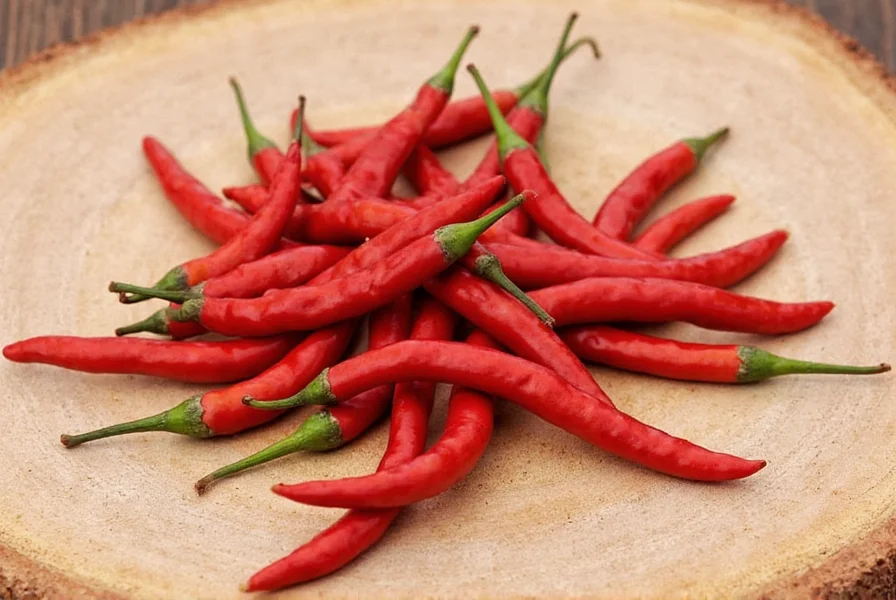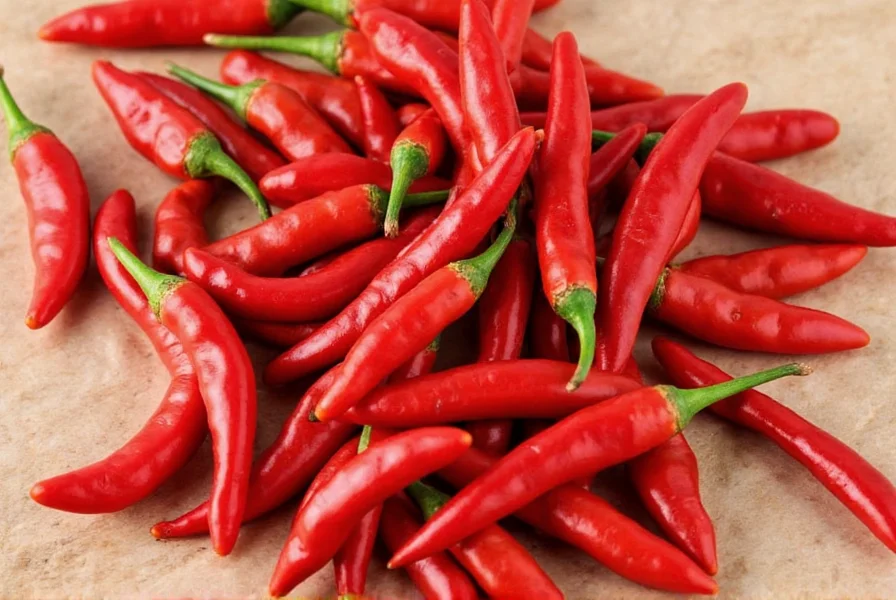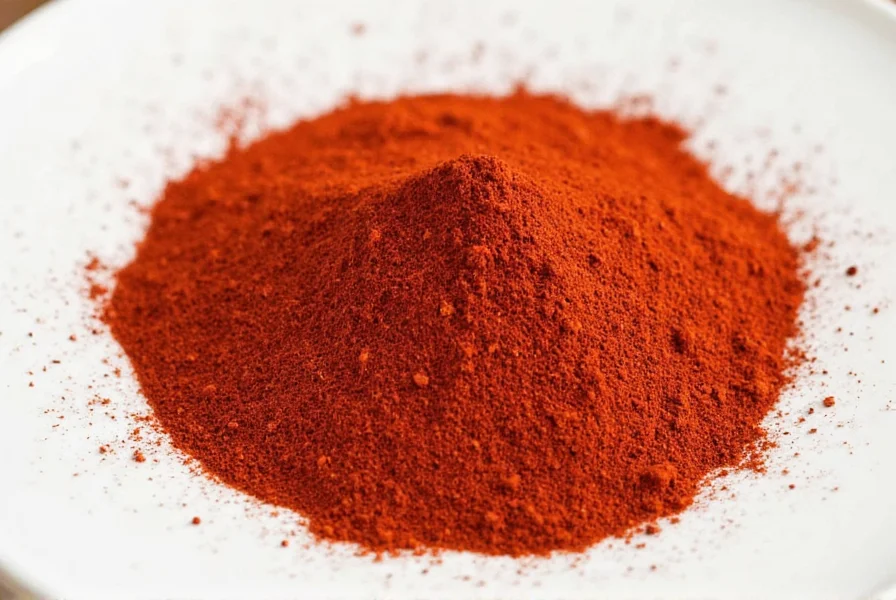Chile Colorado is a dried red chili pepper originating from New Mexico, known for its mild heat (1,000-2,000 Scoville units) and earthy, smoky flavor with hints of cocoa and dried fruit. Despite its name, it's not from Colorado but gets its name from the Spanish word for "colored" or "reddish," referring to its deep reddish-brown hue after drying. This versatile chili is a staple in Mexican and Southwestern cuisine, perfect for sauces, stews, and adobos.
Table of Contents
- What Is Chile Colorado?
- Why It Matters in Cooking
- Color vs. Heat: What You Should Know
- Buying Guide: How to Choose the Best Chile Colorado
- 5 Tips for Using Chile Colorado Like a Pro
- Recipe Roundup: 3 Must-Try Dishes with Chile Colorado
- Frequently Asked Questions
- How to Store Chile Colorado for Maximum Flavor
- Final Thoughts
What Is Chile Colorado?

Chile Colorado, also known as chile Colorado seco, is a dried version of the mild New Mexico green chile. After being harvested and sun-dried, these peppers take on a deep reddish-brown hue (hence the name "Colorado," which means "colored" or "reddish" in Spanish). Unlike many other dried chiles, chile Colorado has a relatively low Scoville rating — usually around 1,000–2,000 units — making it more about earthy sweetness than fiery heat.
Botanical Basics
- Scientific Name: Capsicum annuum
- Origin: United States (New Mexico) and Northern Mexico
- Heat Level: Mild (1,000–2,000 SHU)
- Flavor Profile: Earthy, smoky, slightly sweet with hints of cocoa and dried fruit
| Characteristic | Chile Colorado | Comparison: Ancho Chili | Comparison: Guajillo |
|---|---|---|---|
| Heat Level | Mild | Mild | Moderate |
| Flavor Notes | Earthy, smoky, chocolate undertones | Fruity, raisin-like, sweet | Tea-like, citrusy, tangy |
| Best For | Sauces, stews, adobos | Moles, soups | Rubbed meats, salsas |
Why It Matters in Cooking
If you're looking for a way to add warmth without scorching your tongue, chile Colorado is your go-to. Its flavor brings complexity and richness to dishes that's hard to replicate with other ingredients. Think of it as the bassline in a soulful musical number — not always the star, but essential to the groove.
The Flavor Layer
- Adds a rich, meaty body to sauces and stews
- Blends well with garlic, cumin, and tomatoes
- Acts as a natural coloring agent (without artificial dyes!)

Color vs. Heat: What You Should Know
Contrary to popular belief, the redness of a pepper doesn't always equate to spiciness. In the case of chile Colorado, the vibrant red-brown skin hides a gentle kick rather than a firestorm. Here's what you should know when judging by color:
| Pepper Color | Typical Heat Range | Flavor Characteristics |
|---|---|---|
| Bright Red | Moderate to Hot | Spicy, fruity, sometimes floral |
| Dark Red / Brown | Mild | Earthy, smoky, deep |
| Orange / Yellow | Varies | Grassy, bright, sometimes citrusy |
So, if you want to avoid surprises, always read the label — or better yet, talk to someone who knows their stuff!
Buying Guide: How to Choose the Best Chile Colorado
Whether you're shopping online or hitting up your local mercado, knowing what to look for can make all the difference. Below are some top picks and how they stack up:
| Product | Features | Advantages | Use Cases | Best For |
|---|---|---|---|---|
| La Morena Chile Colorado Whole | Dried whole pods, no additives | Natural texture and flavor retention | Making homemade sauces, pastes, moles | Cooks who like to roast and grind their own |
| Goya Chile Colorado Powder | Premixed powder, easy to use | Convenient, quick to incorporate | Seasoning meats, soups, marinades | Weeknight cooks and beginners |
| El Mexicano Chile Colorado Pack | Whole dried chiles in resealable bag | Air-tight packaging preserves freshness | Long-term storage and bulk cooking | Home chefs and meal preppers |
Things to Look For:
- Fragrance: Aromas should be rich and earthy, not stale or musty.
- Texture: Pods should feel supple, not brittle (which suggests age).
- Color: Uniform reddish-brown tone — avoid faded or mottled specimens.

5 Tips for Using Chile Colorado Like a Pro
- Toast Before Grinding: Lightly toast the dried pods in a dry skillet to bring out deeper flavors before grinding into powder.
- Make Your Own Adobo Sauce: Blend soaked chiles with vinegar, garlic, and spices for a custom condiment.
- Simmer into Stews: Use whole pods in slow-cooked stews; remove before serving for a subtle background flavor.
- Mix with Other Chiles: Combine with hotter varieties like pasilla or chipotle to create balanced blends.
- Try in Desserts: Add a pinch to mole or dark chocolate desserts for a surprising depth of flavor.
Recipe Roundup: 3 Must-Try Dishes with Chile Colorado
1. Chile Colorado Enchilada Sauce
This classic sauce forms the backbone of countless Mexican dishes. Simple, rich, and endlessly versatile.
- Ingredients: Chiles, onion, garlic, cumin, salt, broth
- Time: ~30 mins
- Difficulty: Easy
2. Colorado Chile Ribs
Coat short ribs in a rub made from ground chile Colorado, smoked paprika, and brown sugar for a smoky-sweet finish.
- Method: Low and slow oven or smoker
- Serving Suggestion: Pair with creamy polenta or roasted squash
3. Colorado Mole
Blend with almonds, cinnamon, and dark chocolate for a complex mole that's less spicy and more sultry.
- Key Tip: Soak the chiles overnight for maximum softness and flavor extraction

Frequently Asked Questions
What exactly is Chile Colorado?
Chile Colorado is the dried form of the New Mexico green chile. Despite its name, it's not from the state of Colorado but gets its name from the Spanish word "colorado" meaning "colored" or "reddish," referring to its deep reddish-brown hue after drying. It's a mild chili with a Scoville rating of 1,000-2,000 units, known for its earthy, smoky flavor with hints of cocoa and dried fruit.
Is Chile Colorado spicy?
No, Chile Colorado is considered a mild chili. With a Scoville rating of 1,000-2,000 units, it provides warmth and depth of flavor rather than significant heat. For comparison, a jalapeño ranges from 2,500-8,000 Scoville units, making Chile Colorado noticeably milder. It's perfect for those who want flavor complexity without intense spiciness.
How is Chile Colorado different from regular red chili powder?
Chile Colorado specifically refers to the dried New Mexico chile, while "red chili powder" is often a generic blend of various dried red chiles. Chile Colorado has a distinctive earthy, slightly sweet flavor profile with chocolate undertones, whereas generic chili powder may contain additional spices like cumin and oregano and can vary significantly in flavor and heat.
Can I substitute Chile Colorado with another chile?
Yes, but with flavor considerations. Ancho chiles are the closest substitute, offering a similar mild heat level with fruity, raisin-like notes. For recipes where you want to maintain the reddish color but don't have Chile Colorado, guajillo chiles can work, though they have a more tangy, tea-like flavor. Avoid substituting with significantly hotter chiles unless you want to increase the spice level of your dish.
Where can I buy Chile Colorado?
You can find Chile Colorado in most well-stocked supermarkets (usually in the international or spice aisle), Latin American markets, and online retailers. Look for it as whole dried peppers or as a powder. When shopping, check for rich color, good aroma, and avoid any that appear brittle or stale.
How do I prepare Chile Colorado for cooking?
For whole dried peppers: Remove stems and seeds, then toast lightly in a dry skillet for 15-30 seconds per side to enhance flavor. Soak in hot water for 15-20 minutes until softened before blending into sauces. For powder, you can use it directly, though toasting the powder in a dry pan for a minute can intensify its flavor. Always start with less than you think you need, as you can add more but can't remove it once added.
What dishes work best with Chile Colorado?
Chile Colorado shines in sauces, stews, adobos, and braises. It's traditional in New Mexican cuisine for dishes like carne adovada and red chile sauce. It also works beautifully in mole sauces, as a rub for meats (particularly ribs and brisket), and even in unexpected applications like chocolate desserts where its earthy notes complement cocoa. Its mild heat makes it versatile for family-friendly dishes.
How long does Chile Colorado last?
Properly stored whole dried Chile Colorado peppers can maintain their flavor for up to a year when kept in an airtight container in a cool, dark place. Ground Chile Colorado powder has a shorter shelf life of about 6 months under the same conditions, as the increased surface area causes the volatile oils to degrade more quickly. For longest storage, consider keeping them in the freezer in airtight containers.
How to Store Chile Colorado for Maximum Flavor
Proper storage ensures that your chiles retain their aromatic magic. Here's how to do it right:
- Whole Peppers: Keep in an airtight container in a cool, dark place — good for up to a year.
- Ground Powder: Store in a sealed jar away from light and moisture — best used within 6 months.
- Refrigeration: Optional for long-term storage — helps preserve oils and volatile compounds.

Final Thoughts
Chile Colorado might not be the flashiest name in your spice rack, but it's one of the most valuable players. With its rich flavor, gentle heat, and wide range of culinary uses, it's a staple worth getting to know. Whether you're simmering up a pot of posole or spicing up your Sunday roast, chile Colorado adds depth, warmth, and authenticity that few other ingredients can match.
Now that you've got the inside scoop, it's time to grab a bag and start experimenting. Who knew such a humble little pepper could pack so much punch?











 浙公网安备
33010002000092号
浙公网安备
33010002000092号 浙B2-20120091-4
浙B2-20120091-4